 |
 |
 |
| |
Randomized Trial Comparing Systemic and Local Reactions to Controlled-release Interferon Alpha2b and Pegylated-interferon Alpha2b in Hepatitis C Patients Who Failed Prior Treatment
|
| |
| |
EASL 44th April 23-26 2009 Copenhagen'
Reported by Jules Levin
E. Lawitz1, Z.M. Younossi2, M. Shiffman3, S. Gordon4, R. Ghalib5, J. Humphries6, W. Long6, A. Muir7, J. McHutchison8
1Alamo Medical Research, San Antonio, 2Inova Center For Liver Disease, Inova Health System, Falls Church, 3Division of Gastroenterology, Hepatology, & Nutrition, Virginia Commonwealth University, Richmond, 4Gastroenterology, Henry Ford Health Systems, Detroit,
5Methodist Dallas Medical Center, Dallas, 6Biolex Therapeutics, Pittsboro, 7Medicine-Gastroenterology, Duke University Medical Center, 8Duke Clinical Research Institute, Durham, USA
AUTHOR CONCLUSIONS:
In this open-label trial, 32 patients with chronic HCV who had failed prior treatment were treated for four weeks with either CRa2b (Locterin) or Pa2b (Pegintron)in combination with oral weight-based ribavirin. Despite the limitations of absence of blinding, small sample size, and brief duration of treatment, the available data suggest:
Fewer systemic adverse events (flu like symptoms) on CRa2b
Similar local injection site reactions on CRa2b and Pa2b
No evidence of increased antigenicity on CRa2b
Similar antiviral effects of CRa2b and Pa2b
Larger trials with appropriate power to make further comparisons have been initiated.
ABSTRACT
Aims: To compare systemic and local tolerability of controlled-release interferon alpha2b (CRa2b) and pegylated interferon alpha2b (Pa2b) in HCV patients who failed prior treatment.
Methods: Thirty-two patients with chronic HCV who were previous nonresponders were treated in a twocohort, randomized, open-label comparison with four weeks of CRa2b or Pa2b. Eight subjects in Cohort A were given 320 µg of CRa2b [Locteron, Biolex Therapeutics, Pittsboro, NC, USA] every 2 weeks (160 µg x 2 injections) for 4 weeks, and eight subjects were given 1.5 µg/kg Pa2b [PegIntron®, Schering Plough, Kenilworth, NJ, USA] weekly for 4 weeks. In Cohort B, eight subjects were given 640 µg CRa2b every 2 weeks (160 µg x 4 injections) for 4 weeks, and eight subjects were given 1.5 µg/kg Pa2b weekly for 4 weeks.
All subjects received weight-based ribavirin (1000-1200 mg) with either CRa2b or Pa2b. At the discretion of the investigator, an additional 44 weeks of standard care were offered. Systemic symptoms (arthralgia, chills, fever, headache, myalgia) and injection site reactions were collected weekly by patient report.
Injection site reactions were also assessed by dermatologists 48 hours and 7, 14, 21, 28, 35, and 42 days after each injection.
Results:
Total flu-like symptom occurrences in Cohort A were 74% less frequent on 320 µg CRa2b than Pa2b, and in Cohort B 31% less frequent on 640 µg CRa2b than Pa2b. By dermatologic assessment, injection site reactions in Cohort B occurred in 47% (30/64) of 640 µg CRa2b injection sites versus 69% (22/32) of Pa2b injection sites. By patient report, injection site reactions in Cohort B occurred in 11% (7/64) of 640 µg CRa2b injection sites, and 22% (7/32) of Pa2b injection sites.
Conclusions: Results of this small trial suggest that CRa2b dosed every 2 weeks may result in less frequent flu-like symptoms and fewer local injection site reactions when compared to weekly Pa2b. Larger trials powered to examine adverse event profiles and antiviral activity are being initiated.

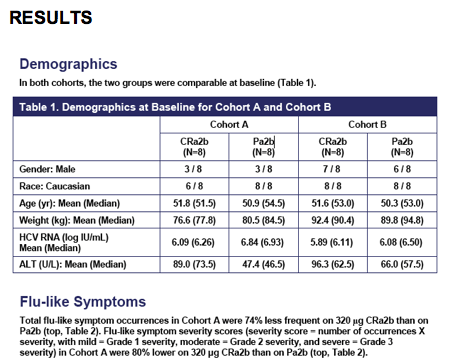
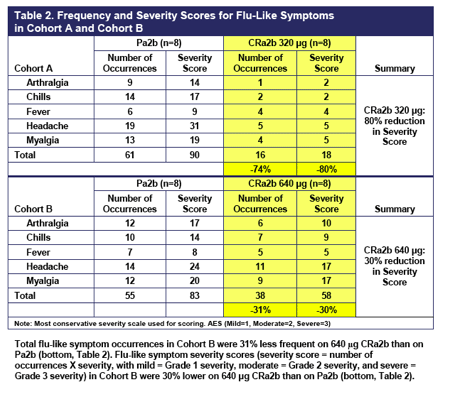

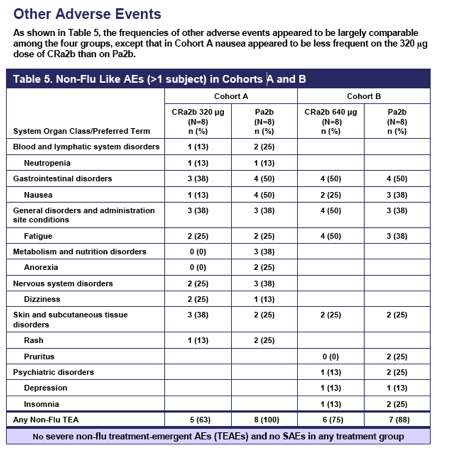
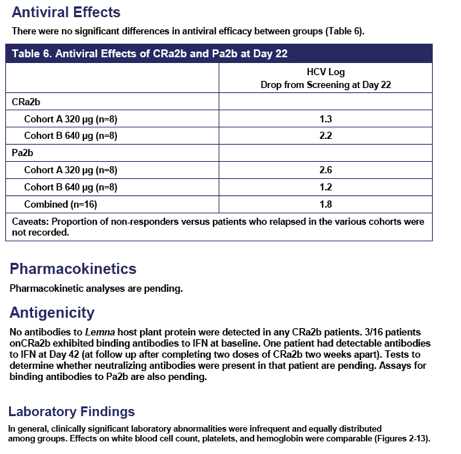
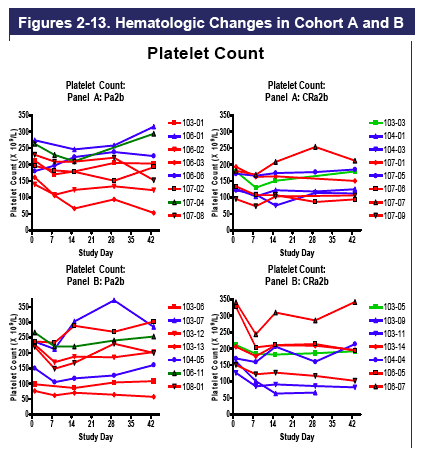
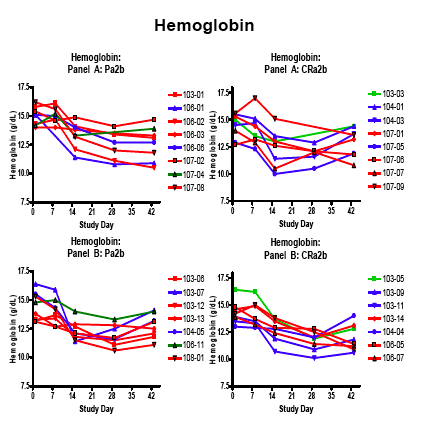
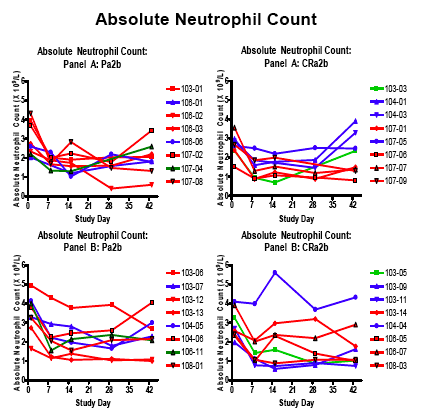
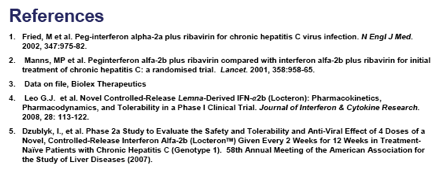
|
| |
|
 |
 |
|
|